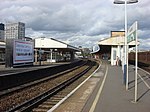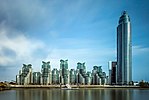MI6

The Secret Intelligence Service (SIS), commonly known as MI6 (Military Intelligence, Section 6), is the foreign intelligence service of the United Kingdom, tasked mainly with the covert overseas collection and analysis of human intelligence in support of the UK's national security. SIS is one of the British intelligence agencies and the Chief of the Secret Intelligence Service ("C") is directly accountable to the Foreign Secretary.Formed in 1909 as the foreign section of the Secret Service Bureau, the section grew greatly during the First World War officially adopting its current name around 1920. The name "MI6" (meaning Military Intelligence, Section 6) originated as a convenient label during the Second World War, when SIS was known by many names. It is still commonly used today. The existence of SIS was not officially acknowledged until 1994. That year the Intelligence Services Act 1994 (ISA) was introduced to Parliament, to place the organisation on a statutory footing for the first time. It provides the legal basis for its operations. Today, SIS is subject to public oversight by the Investigatory Powers Tribunal and the Intelligence and Security Committee of Parliament.The stated priority roles of SIS are counter-terrorism, counter-proliferation, providing intelligence in support of cyber security, and supporting stability overseas to disrupt terrorism and other criminal activities. Unlike its main sister agencies, Security Service (MI5) and Government Communications Headquarters (GCHQ), SIS works exclusively in foreign intelligence gathering; the ISA allows it to carry out operations only against persons outside the British Islands. Some of SIS's actions since the 2000s have attracted significant controversy, such as its alleged complicity in acts of enhanced interrogation techniques and extraordinary rendition.Since 1994, SIS headquarters have been in the SIS Building in London, on the South Bank of the River Thames.
Excerpt from the Wikipedia article MI6 (License: CC BY-SA 3.0, Authors, Images).MI6
Albert Embankment, London Vauxhall (London Borough of Lambeth)
Geographical coordinates (GPS) Address Website External links Nearby Places Show on map
Geographical coordinates (GPS)
| Latitude | Longitude |
|---|---|
| N 51.487222222222 ° | E -0.12416666666667 ° |
Address
Secret Intelligence Service (MI6)
Albert Embankment 85
SE1 7TP London, Vauxhall (London Borough of Lambeth)
England, United Kingdom
Open on Google Maps







